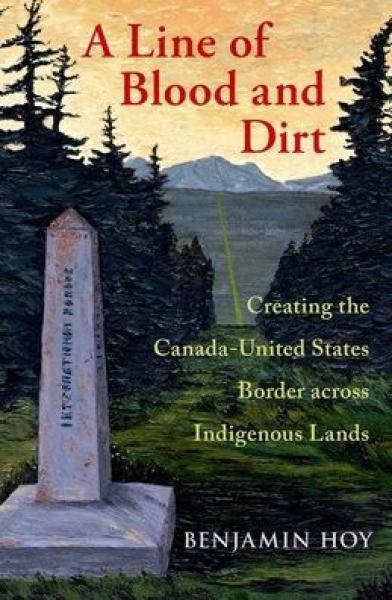Description
Often described as the longest undefended border in the world, the Canada-US border was born in blood, conflict, and uncertainty.
At the end of the American Revolution, Britain and the United States imagined a future for each of their nations that stretched across a continent. They signed treaties with one another dividing lands neither country could map, much less control. A century and a half later, Canada and the United States had largely fulfilled those earlier ambitions. Both countries had built nations that stretched from the Atlantic to the Pacific and had made an expansive international border that restricted movement.
The vision that seemed so clear in the minds of diplomats and politicians never behaved as such on the ground. Both countries built their border across Indigenous lands using hunger, violence, and coercion to displace existing communities and to disrupt their ideas of territory and belonging. The border's length undermined each nation's attempts at control. Unable to prevent movement at the border's physical location for over a century, Canada and the United States instead found ways to project fear across international lines They aimed to stop journeys before they even began.
"This book examines the creation and enforcement of Canada United States border from 1775 until 1939. Built with Indigenous labour and on top of Indigenous land, the border was born in conflict. Federal administrators used deprivation, starvation, and coercion to displace Indigenous communities and undermine their conceptions of territory and sovereignty. European, African American, Chinese, Cree, Assiniboine, Dakota, Lakota, Nimiipuu, Coast Salish, Ojibwe, and Haudenosaunee communities faced a diversity of border closure experiences and timelines. Unevenness and variation served as hallmarks of the border as federal officials in each country committed to a kind of border power that was diffuse and far reaching. Utilizing Historical GIS, this book showcases how regional conflicts, political reorganization, and social upheaval created the Canada-US border and remade the communities who lived in its shadows"--
Product Details
- Oxford University Press, Brand
- Feb 16, 2021 Pub Date:
- 0197528694 ISBN-10:
- 9780197528693 ISBN-13:
- 344 Pages
- 9.3 in * 6.2 in * 1.2 in Dimensions:
- 1 lb Weight:




